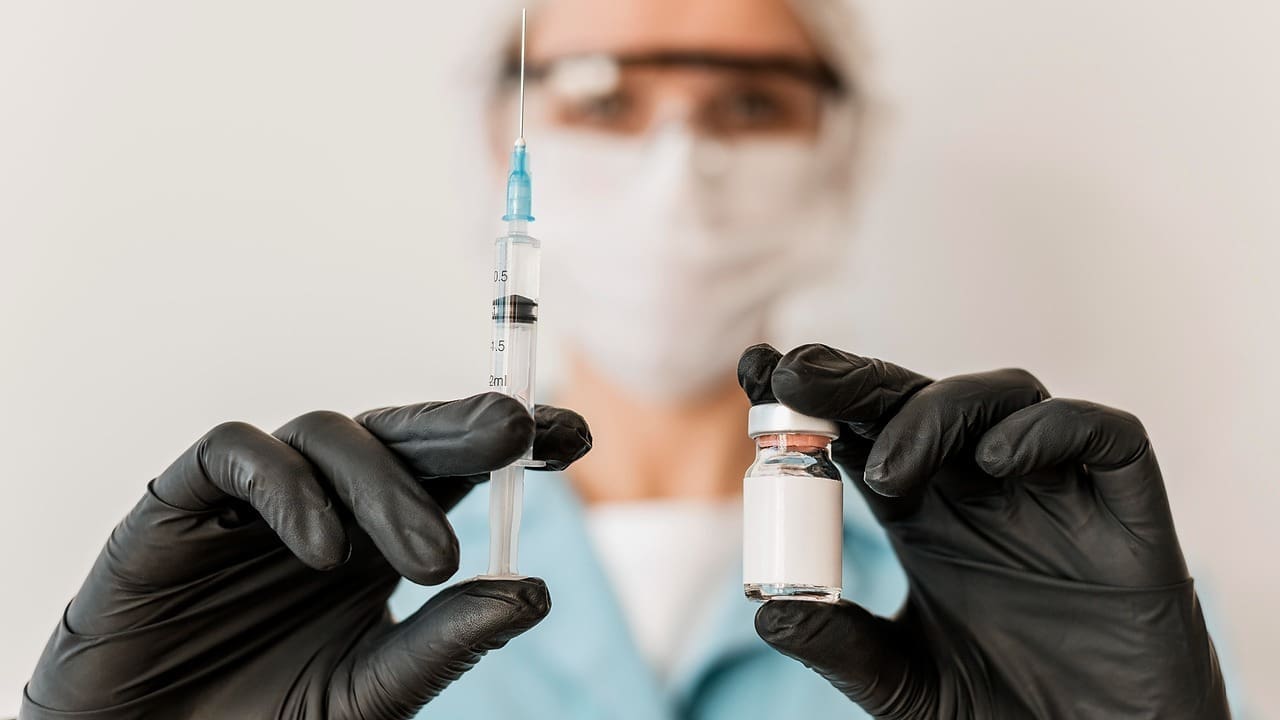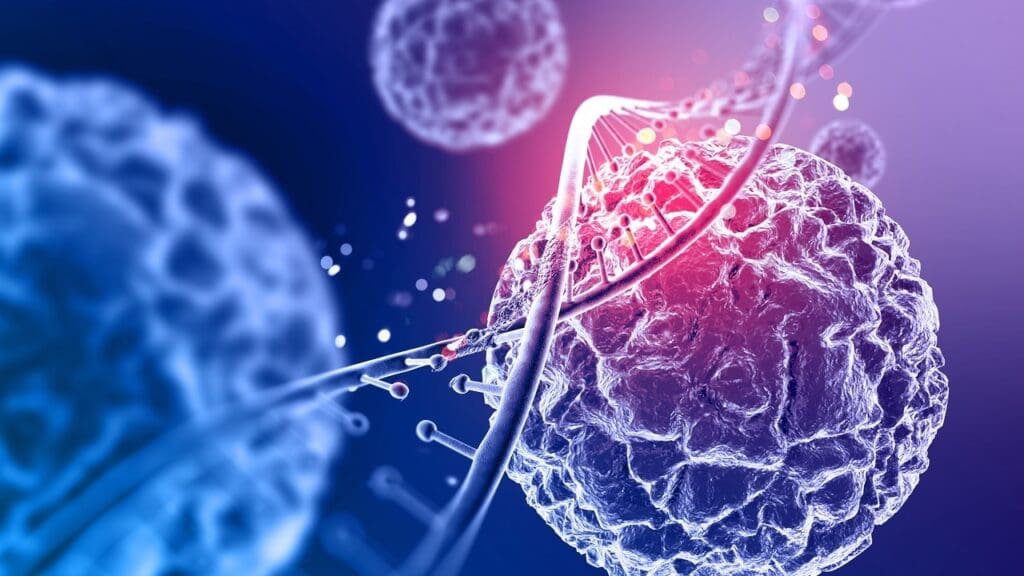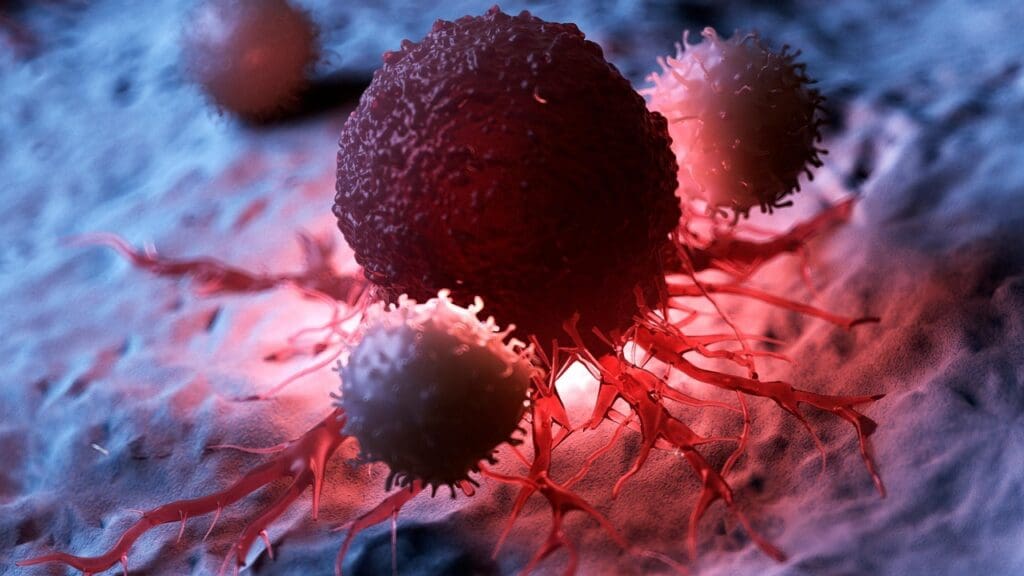Last Updated on November 27, 2025 by Bilal Hasdemir

We are seeing a big change in fighting cancer with cancer vaccines. These new treatments use the immune system to fight cancer. At Liv Hospital, we focus on advanced care that puts patients first.
New studies show how to make cancer vaccines better. They use personalized parts and careful testing. We’ll look at how these vaccines help in cancer treatment and the types available.
Key Takeaways
- Cancer vaccines offer a new hope in preventing and treating cancer.
- Personalized neoantigens play a key role in making vaccines more effective.
- Good clinical trials are important for vaccine safety.
- Oncology vaccines are a fast-growing area in cancer treatment.
- Advanced care that focuses on patients is available at Liv Hospital.
The Science Behind Cancer Immunotherapy
Cancer immunotherapy is a new way to fight cancer. It uses the body’s immune system to attack cancer cells. This gives hope to patients with many types of cancer.
How the Immune System Recognizes Cancer
The immune system finds cancer cells in a special way. It looks for specific markers on these cells. Recognizing these markers is key to fighting cancer.
The Need for Immune System Modulation in Cancer Treatment
Cancer cells can hide from the immune system. They do this by blocking the immune response. Changing how the immune system works is important in fighting cancer.
| Mechanism | Description | Role in Cancer Immunotherapy |
|---|---|---|
| Tumor-associated antigens | Antigens expressed on cancer cells | Targets for immune recognition |
| Immune checkpoint inhibitors | Drugs that release brakes on immune response | Enhance anti-tumor immunity |
| Cancer vaccines | Vaccines that stimulate immune response against cancer | Promote tumor-specific immunity |
Understanding how the immune system finds cancer is key. By improving how it works, we can make cancer treatments better. This includes cancer vaccines and immunotherapy.
What Are Oncology Vaccines and How Do They Work
Oncology vaccines are a new way to fight cancer. They use the body’s immune system to attack cancer cells. This is a big change in how we treat cancer, with vaccines playing a key role.
Defining Cancer Vaccines
Cancer vaccines, or oncology vaccines, are a type of immunotherapy. They help the immune system find and fight cancer cells. These vaccines boost the body’s natural defense against cancer, making them a hopeful treatment option.
Mechanism of Action in Stimulating Anti-Tumor Immunity
Oncology vaccines introduce antigens to the immune system. This triggers a response against cancer cells. Immune cells like T cells and dendritic cells are activated to destroy cancer cells.
Differentiating Cancer Vaccines from Traditional Vaccines
Cancer vaccines are different from traditional vaccines. While traditional vaccines prevent diseases, cancer vaccines treat or prevent cancer from coming back. The aim of oncology vaccines is to boost anti-tumor immunity, introducing a new way to fight cancer.
Prophylactic Cancer Vaccines: Preventing Cancer Development
Prophylactic vaccines are a promising way to lower cancer rates. They work by stopping infections that can cause cancer. These vaccines target viruses that can lead to cancer.
HPV Vaccines and Cervical Cancer Prevention
HPV vaccines are very effective against cervical cancer. HPV vaccines target the strains most commonly associated with cervical cancer. This greatly lowers the risk of getting this disease.
Hepatitis B Vaccines and Liver Cancer Risk Reduction
Hepatitis B virus (HBV) is a big risk for liver cancer. Vaccines against HBV have been shown to cut down liver cancer cases. The widespread use of hepatitis B vaccines has led to a significant decrease in liver cancer cases in high HBV areas.
Success Rates and Population Impact
The effect of prophylactic vaccines on cancer prevention is huge. The table below shows how well HPV and hepatitis B vaccines work:
| Vaccine | Cancer Type | Reduction in Cancer Incidence |
|---|---|---|
| HPV Vaccine | Cervical Cancer | Up to 90% |
| Hepatitis B Vaccine | Liver Cancer | Up to 85% |
The success of these vaccines shows their big role in fighting cancer worldwide. By cutting down virus-related cancers, they greatly help public health.
Therapeutic Cancer Vaccines: Treating Existing Malignancies
Therapeutic cancer vaccines are a new way to fight cancer. They help the immune system find and destroy cancer cells. This makes them a hopeful option for treating cancer.
Core Principles
The main idea of these vaccines is to boost the immune system’s fight against cancer. They do this by introducing special proteins or genetic material. This helps the immune system spot and attack cancer cells better.
FDA-Approved Therapeutic Vaccines
Sipuleucel-T is a well-known FDA-approved vaccine for advanced prostate cancer. It uses a patient’s own immune cells to fight prostate cancer. This is done by making these cells recognize and attack cancer cells.
Patient Selection and Response Predictors
Choosing the right patients is key for these vaccines to work. Researchers are looking for ways to know who will benefit most. They consider the type of cancer, how far it has spread, and other patient details.
Therapeutic cancer vaccines offer several benefits:
- They could lead to longer survival times
- They might cause fewer side effects
- They could be used with other treatments to work better together
As research keeps improving, these vaccines will become more important in fighting cancer.
Peptide and Protein-Based Cancer Vaccines
Peptide and protein-based cancer vaccines are a new hope in fighting cancer. They target specific antigens found in tumors. This helps the body’s immune system fight cancer cells.
Tumor-Associated Antigen Targeting
Tumor-associated antigens (TAAs) are proteins or peptides on tumor cells. Peptide and protein vaccines aim at these antigens. This makes them perfect targets for cancer treatment.
Tumor-Specific Antigen Approaches
Tumor-specific antigens are only on cancer cells. They are not found in healthy cells. This makes them great for creating personalized vaccines for each patient.
Adjuvant Requirements for Enhanced Immunogenicity
Adjuvants boost the immune system’s reaction to antigens. In cancer vaccines, they are key to making the vaccine work better. The right adjuvant can greatly improve the vaccine’s effectiveness.
| Adjuvant Type | Mechanism of Action | Effectiveness |
|---|---|---|
| Aluminum salts | Stimulate Th2 response | Moderate |
| Squalene-based emulsions | Enhance antigen presentation | High |
| Cytokines | Activate immune cells | Variable |
Knowing how adjuvants work helps us pick the best ones. This makes peptide and protein-based cancer vaccines more effective.
Cellular and Gene-Based Oncology Vaccines
Cellular and gene-based vaccines are new ways to fight cancer. They use the body’s immune system to attack tumors. These vaccines work by using cells or genetic material to trigger an immune response against cancer cells.
Dendritic Cell Vaccine Development
Dendritic cell vaccines take cells from a patient’s blood. They load these cells with tumor antigens and then put them back into the body. This method has shown good results in fighting different cancers.
Whole Tumor Cell Vaccine Approaches
Whole tumor cell vaccines use killed tumor cells to start an immune response. They can come from the patient’s own cells or from other patients.
mRNA and Viral Vector Platforms
mRNA and viral vector vaccines deliver genetic material to cells. This genetic material tells cells to make proteins that the immune system can recognize as foreign. These vaccines are quick to make and can be changed easily.
| Vaccine Type | Description | Advantages |
|---|---|---|
| Dendritic Cell Vaccines | Uses patient’s dendritic cells loaded with tumor antigens | Personalized, stimulates specific immune response |
| Whole Tumor Cell Vaccines | Utilizes irradiated tumor cells | Can be autologous or allogeneic, broad antigen presentation |
| mRNA and Viral Vector Vaccines | Delivers genetic material encoding tumor antigens | Rapid development, flexible, and scalable |
These new vaccines are changing how we treat cancer. They give hope to patients with many types of cancer.
Personalized Neoantigen Vaccines: The Future of Precision Oncology
Personalized neoantigen vaccines are a new way to fight cancer. They are made just for each patient, using their tumor’s unique genetic code. This method aims to boost the body’s immune system to fight cancer cells better.
Identifying Patient-Specific Tumor Mutations
First, we find the unique genetic changes in a patient’s tumor. This is done through advanced DNA sequencing. We then pick the most important changes to make a vaccine that targets cancer cells.
Manufacturing Challenges and Solutions
Making these vaccines is tricky because each one is different. We’re working on making the process faster and better. New technologies like mRNA are helping us make more vaccines quickly and efficiently.
| Manufacturing Challenge | Proposed Solution |
|---|---|
| Personalization for each patient | Advanced genomic sequencing and predictive algorithms |
| Scalability of production | Innovations in mRNA technology |
| Speed of vaccine production | Streamlined manufacturing processes |
Early Clinical Results and Biomarkers of Response
Early tests of these vaccines look promising. Some patients have seen big improvements. We’re also looking for signs that will tell us who will benefit most from these vaccines.
We’re excited about the future of personalized neoantigen vaccines. They could change how we treat cancer. By tailoring treatment to each patient, these vaccines are a big step forward in fighting cancer.
Clinical Trial Design for Cancer Vaccines
Cancer vaccines are getting better, and so is the need for strong clinical trial designs. We must think about several important factors. This ensures the trials give us useful data on how safe and effective the vaccines are.
Endpoint Selection and Patient Stratification
Choosing the right endpoints is key in cancer vaccine trials. We should look at survival rates and how long the disease doesn’t get worse. But we also need to check how well the vaccine boosts the immune system. It’s important to sort patients too. This way, we can find out who will get the most benefit from the vaccine.
- Identify relevant biomarkers for patient stratification
- Use immune response metrics as surrogate endpoints
- Consider overall survival and progression-free survival as primary endpoints
Immune Monitoring Strategies
It’s vital to track how cancer vaccines work. We use different methods, like:
- T-cell response analysis
- Antibody production measurement
- Tumor microenvironment assessment
These help us see how well the vaccine works and find what makes it effective.
Regulatory Considerations and Accelerated Approval Pathways
We need to work with regulatory agencies to move cancer vaccine development forward. Fast-track approval can get new treatments to patients sooner. But, we must carefully plan the trials and choose the right goals.
By designing cancer vaccine trials well, we can make treatments better and help patients more.
Limitations and Challenges of Current Cancer Vaccines
Cancer vaccines show promise but face several hurdles. They aim to get the immune system to fight cancer cells. Yet, many factors make it hard for them to succeed.
Tumor Immune Evasion Mechanisms
Tumors find ways to avoid the immune system. They can lower the amount of tumor antigens, use immune checkpoint molecules, and release cytokines that suppress the immune system. “Tumors are adept at hiding from the immune system, making it challenging for cancer vaccines to elicit a robust response.” For example, tumors can hide by reducing the amount of tumor antigens, making it tough for the immune system to find them.
Antigen Heterogeneity and Loss
Antigen heterogeneity means tumors have different antigens. This variation can cause the loss of antigens, making vaccines less effective. “The heterogeneous nature of tumors poses a significant challenge for cancer vaccines, as it can result in the outgrowth of antigen-negative tumor cells.” Researchers are looking into ways to target multiple antigens at once.
Immunosuppressive Tumor Microenvironment
The tumor microenvironment is key in suppressing immune responses against tumors. Tumors can attract immune suppressive cells, like regulatory T cells and myeloid-derived suppressor cells.
“The tumor microenvironment is a significant barrier to effective cancer vaccination, as it can dampen the immune response and promote tumor growth.”
Researchers are exploring ways to change the tumor microenvironment to boost vaccine effectiveness.
It’s vital to understand these challenges to make better cancer vaccines. By tackling these issues, researchers can create more effective vaccines, helping to fight cancer better.
Combination Strategies to Enhance Vaccine Efficacy
To make oncology vaccines work better, researchers are looking at new ways to use them. They’re mixing vaccines with other treatments. This could help beat the limits of using just one treatment and make patients do better.
Checkpoint Inhibitor Combinations
One good idea is to pair cancer vaccines with checkpoint inhibitors. This mix can make the immune system work better against tumors. Studies show it can lead to better results in many cancers.
Chemotherapy and Radiation Synergy
Chemotherapy and radiation can also boost the power of cancer vaccines. They can change the tumor environment, making it easier for the vaccine to work. For example, chemotherapy can get rid of cells that stop the immune system, and radiation can help show the tumor to the immune system.
Novel Adjuvant and Delivery Technologies
New adjuvants and ways to deliver vaccines are also being studied. These can make vaccines more effective and get them to the right cells. For instance, tiny particles can be made to find and reach specific immune cells, making the vaccine stronger.
| Combination Strategy | Mechanism of Action | Potential Benefits |
|---|---|---|
| Checkpoint Inhibitors | Release brakes on the immune system | Enhanced anti-tumor immunity |
| Chemotherapy | Deplete immunosuppressive cells | Improved vaccine response |
| Radiation | Increase tumor antigen presentation | Enhanced immune recognition |
As we keep looking into these ways to mix treatments, we’ll see big steps forward in cancer vaccines. For the latest on this, check out studies in the Journal for ImmunoTherapy of Cancer here.
Conclusion: The Evolving Landscape of Oncology Vaccines
We’ve looked into the world of oncology vaccines, a field that’s changing fast. Cancer vaccines are showing great promise. They come in different types, like those that prevent cancer and those that treat it.
Prophylactic vaccines, like those for HPV and Hepatitis B, have been a big success. They help stop cancer from happening. Therapeutic vaccines, like sipuleucel-T, are also showing promise in fighting cancer. Researchers are working hard to make these vaccines better and safer.
The future of cancer vaccines looks bright. We’re seeing more personalized vaccines and new ways to use them together. As we learn more about cancer immunotherapy, vaccines will be a key part of the fight against cancer. They offer hope to patients all over the world.
FAQ
What are oncology vaccines, and how do they work?
Oncology vaccines, also known as cancer vaccines, boost the immune system to fight cancer. They introduce antigens or genetic material to the body. This triggers an immune response against cancer cells.
What are the different types of cancer vaccines?
There are four main types of cancer vaccines. Prophylactic vaccines prevent cancer, while therapeutic vaccines treat it. Peptide and protein-based vaccines and cellular and gene-based vaccines are also used.
How do prophylactic cancer vaccines prevent cancer development?
Prophylactic vaccines, like HPV and hepatitis B vaccines, protect against infections that can cause cancer. HPV vaccines prevent cervical cancer, and hepatitis B vaccines lower liver cancer risk.
What is the role of adjuvants in cancer vaccines?
Adjuvants enhance the immune response to cancer vaccines. They help stimulate the immune system, making the vaccine more effective.
What are the challenges and limitations of current cancer vaccines?
Current cancer vaccines face challenges like tumor immune evasion and antigen heterogeneity. The immunosuppressive tumor microenvironment also limits their effectiveness. Ongoing research aims to overcome these challenges.
How are cancer vaccines being combined with other therapies to enhance efficacy?
Cancer vaccines are being combined with checkpoint inhibitors, chemotherapy, and radiation. New adjuvant and delivery technologies are also being explored to improve their effectiveness.
What is the future of personalized neoantigen vaccines in precision oncology?
Personalized neoantigen vaccines have the power to revolutionize precision oncology. They target specific tumor mutations. Research focuses on identifying and manufacturing these vaccines and developing biomarkers to predict response.
How are clinical trials designed for cancer vaccines?
Clinical trials for cancer vaccines involve careful endpoint selection and patient stratification. Immune monitoring is also key. Regulatory considerations and accelerated approval pathways are explored to speed up vaccine development.
Are cancer vaccines a replacement for traditional cancer treatments?
No, cancer vaccines are not a replacement for traditional cancer treatments. They are a complementary approach used in combination with other therapies to enhance treatment outcomes.
What is the potential of therapeutic cancer vaccines in treating existing malignancies?
Therapeutic cancer vaccines, like sipuleucel-T, show promise in treating existing malignancies. Research aims to improve patient selection and response predictors to enhance vaccine effectiveness.
References
- Cancer Research Institute (CRI): https://www.cancerresearch.org/immunotherapy-by-treatment-types/cancer-vaccines
- National Center for Biotechnology Information (NCBI) / PMC: https://pmc.ncbi.nlm.nih.gov/articles/PMC9217071/
- National Center for Biotechnology Information (NCBI) / PMC: https://pmc.ncbi.nlm.nih.gov/articles/PMC10459477/
- BOC Sciences: https://www.bocsci.com/resources/definition-and-classification-of-cancer-vaccines.html
- Oncology Practice Management: https://oncpracticemanagement.com/issues/2021/march-2021-vol-11-no-3/therapeutic-cancer-vaccines-the-next-frontier








